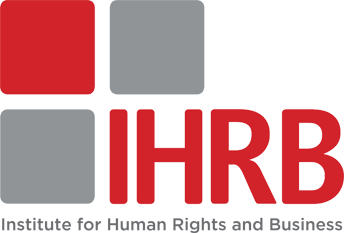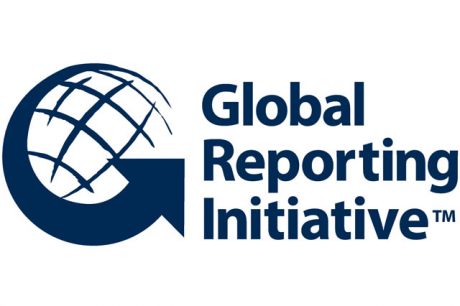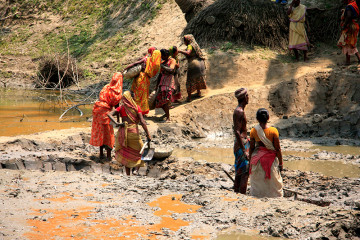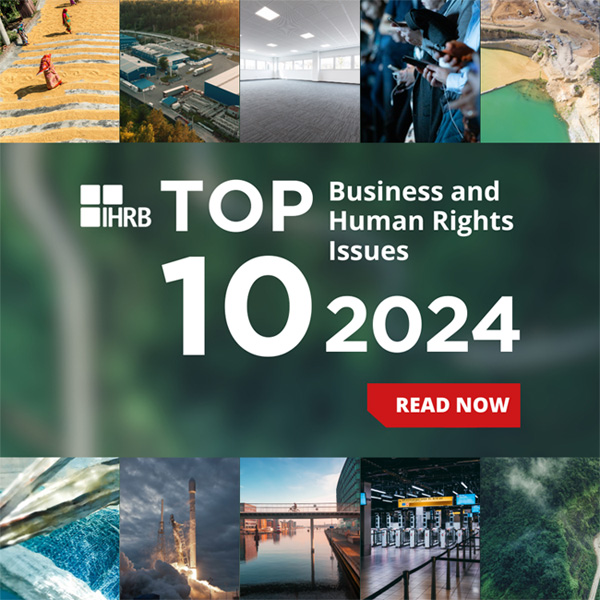In 2008, the three organizations partnered for the project Human Rights – A Call to Action. Two publications and three years later, the research and activity instigated for the project has fed into an update of GRI’s third generation of Sustainability Reporting Guidelines. Global Reporting Initiative GRI’s Guidelines allow organizations of any size, sector and location to measure and report their sustainability performance.
Developed by diverse multi-stakeholder working groups, and following due process including Public Comment Periods, the Guidelines drive GRI’s mission of making sustainability reporting standard practice.
When John Ruggie presented the finalized 'Protect, Respect and Remedy' Framework [28 pages, 153kb] were positioned as marking “the end of the beginning” in terms of supporting “the effective prevention of, and remedy for, business-related human rights harm.”
The Introduction to the Guiding Principles acknowledges the hundreds of individuals, groups and institutions worldwide that have contributed to the Special Representative’s work since 2005. Among those inspired by the increasing momentum of Ruggie’s mandate, and the concurrent 60th anniversary of the Universal Declaration of Human Rights, were Realizing Rights: The Ethical Globalization Initiative, the United Nations Global Compact, and The Global Reporting Initiative (GRI) – provider of the world’s most comprehensive sustainability reporting framework.
In 2008, the three organizations partnered for the project Human Rights – A Call to Action. Two publications and three years later, the research and activity instigated for the project has fed into an update of GRI’s third generation of Sustainability Reporting Guidelines.
GRI’s Guidelines allow organizations of any size, sector and location to measure and report their sustainability performance. Developed by diverse multi-stakeholder working groups, and following due process including Public Comment Periods, the Guidelines drive GRI’s mission of making sustainability reporting standard practice.
The updated Guidelines are known as G3.1. Their new and expanded guidance on reporting human rights performance aligns with Ruggie’s work. Much of G3.1’s human rights-related content is designed to capture performance around the main building blocks of the ‘Protect, Respect and Remedy’ Framework – assessment, remediation, and the newly defined parameters for human rights due diligence in companies.
G3.1 reflects the growing global consensus around respect for human rights, and new perspectives on how human rights relate to business. Both have big implications for organizational reporting. On G3.1’s publication, GRI Deputy Chief Executive Nelmara Arbex stated that the new guidance “will enable all organizations to be transparent about a wide range of important, but often neglected, issues.” Early in their research, Realizing Rights, the UNGC and GRI concluded that labour practices were the most widely reported human rights topic but were not often identified by reporters as a human rights issue. Even these disclosures provided little quantitative information.
So what’s in G3.1? The GRI Guidelines’ structure includes Disclosures on Management Approach and Performance Indicators. Indicator data is disclosed against Aspects – GRI’s term for general types of sustainability information. There are significant changes to all three elements.
Reporters are firstly advised that the main reference for G3.1’s human rights guidance is the International Bill of Rights. Spotlighting the reference is intended to get all reporting companies to scrap their preconceptions and consider the full range of human rights they may affect. G3.1 also establishes that the international legal framework for human rights is underpinned by over 80 other instruments, both universal and regional, from soft declarations to binding treaties.
The new content in the various categories of Disclosure on Management Approach focuses on the existence of demonstrable management systems for human rights impacts. Disclosure on the implementation of due diligence processes is requested. The category of Policy asks how companies prioritize human rights, how policy is applied in terms of location and business partners, and how human rights policy is extended and embedded across the company.
The category of Organizational Responsibility has new content on identifying the distribution of responsibilities for human rights policy and practices, and the nature of the highest governance body’s involvement. The Training and Awareness category now asks how human rights are reflected in employee training and awareness-raising, particularly with regard to the availability and accessibility of grievance mechanisms. Monitoring, Follow Up and Remediation asks how the results of monitoring are applied, including those of external parties, to ensure ongoing human rights consideration.
Organizational Risk Assessment and Impact Assessment are new Disclosure on Management Approach categories. The former seeks disclosure on how companies assess human rights issues that are relevant to them, and how they highlight the opportunities and risks that can promote or undermine respect for human rights. Impact Assessment focuses on tracking impacts; how stakeholder views are included, how vulnerable and minority groups are considered, how relationships with entities in the value chain are considered, and how impact assessment informs processes that investigate alternatives and assist in mitigation and remediation. As with much of GRI’s guidance, the intention of the new guidance is to discourage ‘tick-box’ reporting and encourage ongoing, dynamic analysis and response. Just as the Guiding Principles emphasize that ongoing tracking is essential for assessment and remediation to be effective, G3.1’s guidance suggests to reporters that the revealing of information is not reporting’s sole purpose. Rather, it is the way such information is fed back to senior management and decision makers to shape policy, strategy and operations that better represents one of reporting’s main benefits.
A major addition to the Guidelines’ nine existing human rights Performance Indicators is the insertion of ‘significant suppliers’ to the scope of company’s disclosure; how contracts are assessed and suppliers screened, and where suppliers may be violating the right to exercise freedom of association, or implicated in child labor. The focus on value chain is a strong trend in sustainability reporting; GRI has a program in place to train multinationals in sustainable supply chains. Companies with great reporting practice and widely admired sustainability performance can still find serious impacts distant from their own operations.
G3.1’s two new Indicators relate to two new sustainability Aspects – Assessment and Remediation, in line with the Guiding Principles. One Indicator seeks disclosure about human rights reviews and impact assessments to gain insight into how far companies take human rights into account when deciding on operational locations, and how they evaluate potential for being associated with, or considered complicit in, human rights abuses. The other requests disclosure of the number of grievances filed, addressed, and resolved through formal grievance mechanisms. The Indicator presents an opportunity to focus on the company’s boundary of influence. Asking companies to reveal how often they were complained against is the first step.
Disaggregating the data by internal and external stakeholders, gender, and minority group membership can pinpoint where potentially negative impacts are occurring, against who and, ultimately, why. Again, as with much of GRI’s guidance, the data can be interpreted positively, giving all organizations the chance to demonstrate good performance and proactive responses. Use of GRI’s Guidelines is voluntary; but organizations reporting fully against the Guidelines will now commit to more analysis and more tracking of their top-down approach to human rights, and examine their grievance and remediation performance. GRI is committed to the continuous improvement of its Guidelines and will continue to revisit its human rights guidance, raising the profile of human rights in the sustainability field and organizational reporting.





























How should businesses respond to an age of conflict and uncertainty?
As 2024 began, European Commission President Ursula von der Leyen aptly summed up our deeply worrying collective moment. As she put it, speaking at the annual World Economic Forum in Switzerland, we are moving through “an era of conflict and...
26 March 2024 | Commentary
Commentary by Scott Jerbi, Senior Advisor, Policy & Outreach, IHRB